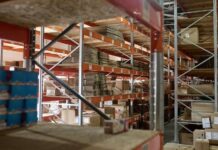As the personalized reciprocal higher tariffs on countries with which the United States has significant trade deficits take effect on Wednesday, April 9, 2025, at 12:01 a.m. EDT, there are potential consequences that may unfold regarding how U.S. tariffs impact global trade.
Delay in Export Payments: The imposition of elevated tariffs could result in delays in receiving payments for goods that have already been exported to the U.S. This situation may create a cash flow issue for suppliers, highlighting how U.S. tariffs impact global trade.
Supplier Discounts Requested: To mitigate the impact of higher tariffs on consumers, U.S. retailers might request that their apparel suppliers absorb some of the increased costs through discounts. This trend is expected to be particularly noticeable among suppliers in Asian countries affected by these tariffs, further illustrating how U.S. tariffs impact global trade.
Request for Policy Support: In response to payment delays from U.S. importers and to shield themselves somewhat from high reciprocal tariffs, various industries, including textiles and apparel, are likely to seek enhanced policy support from their respective governments.
Challenges in Securing Loans: Banks may hesitate to extend additional loans to apparel manufacturers who have already taken on significant amounts of credit. This concern is especially relevant in countries like Sri Lanka, where garment exports are a crucial source of foreign income.
Increased Competition in Emerging Markets: To avoid incurring the higher tariff costs, U.S. buyers may cancel pre-produced apparel orders that miss the April 9 shipping deadline. Exporters may attempt to sell this apparel in emerging markets such as India and developing nations like Algeria, intensifying competition within their local markets, and showcasing how U.S. tariffs impact global trade.
Currency Devaluation Considerations: Some nations, particularly smaller ones, may contemplate devaluing their currencies to mitigate the impact of increased U.S. tariffs. This move would help ensure that their exporters do not suffer substantial losses when measured in local currency.
Negotiating with the U.S.: Several countries may lower their tariffs on U.S. goods to negotiate more favorable terms for their own exports with the U.S. administration. The U.S. President has indicated that approximately 50 nations have expressed interest in negotiating tariff conditions.
Expedited Free Trade Agreement Talks: Countries with shared trading interests are likely to hasten negotiations for free trade agreements to sustain economic momentum. For instance, the UK and South Korea are expected to expedite their trade deal discussions, as are the EU and India.
Increased Near-Shoring: In comparison to Asian garment-exporting nations, newly announced tariffs by President Trump are lower for countries like Mexico, Honduras, Haiti, and the Dominican Republic, which are closer to the U.S. This trend may lead to increased investment in these locations and a rise in near-shoring.
Cost-Cutting Measures by U.S. Retailers: With limited options for cost reductions from suppliers without sacrificing quality, U.S. retailers might need to cut back on marketing and advertising expenses. Additionally, they may seek ways to minimize markdowns and returns from unsold merchandise.
Decline in U.S. Consumer Confidence: The rise in prices for various goods could lead U.S. consumers to feel the financial strain, prompting a decrease in clothing purchases compared to previous levels.
Push for Sustainability: As U.S. consumers buy less, there may be a shift towards seeking clothing that offers durability and comfort, inadvertently promoting sustainability efforts.
Luxury Industry Slowdown: Due to diminished consumer confidence and related factors, affluent Americans may be less inclined to invest heavily in luxury apparel, resulting in a subdued luxury market for at least a few months.
Domestic Manufacturing Challenges: Achieving robust domestic manufacturing in the U.S. is unlikely unless the import costs of raw materials are significantly lowered, as the country lacks many necessary production inputs. Additionally, high labor costs in the U.S. will continue to pose a barrier, demonstrating the far-reaching consequences of how U.S. tariffs impact global trade.
































